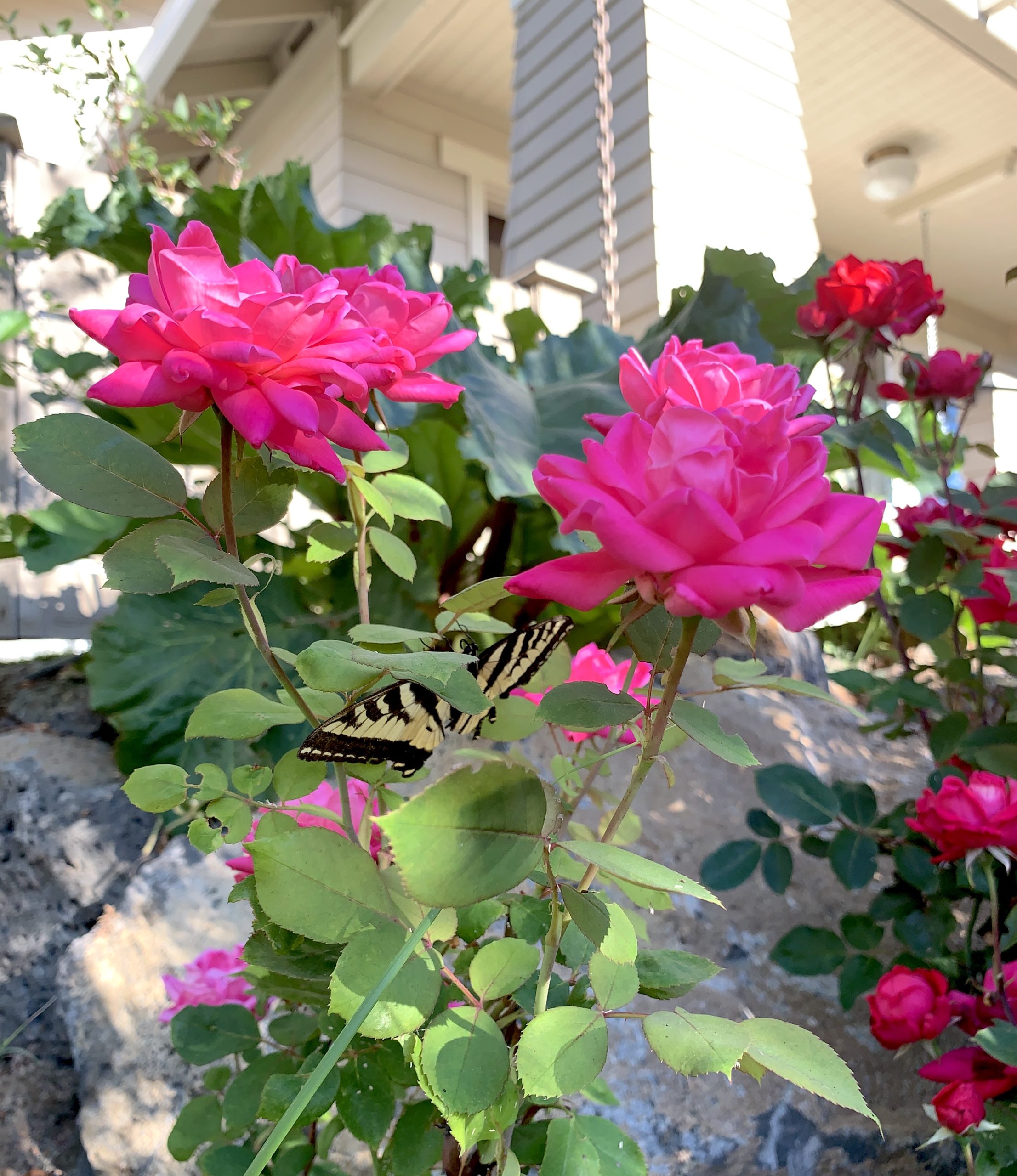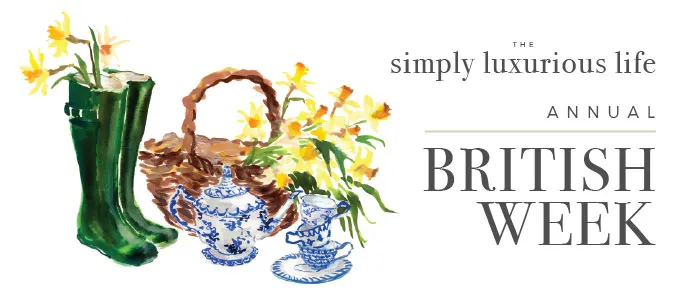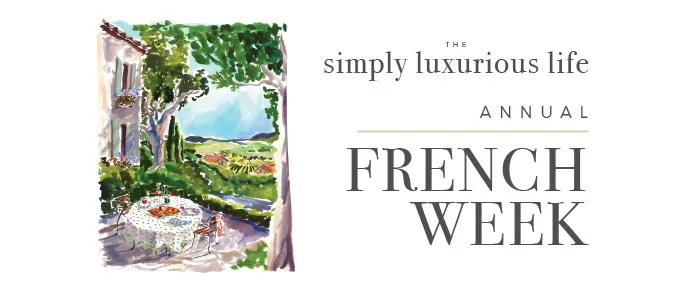Become a Member for as little as $4/mo and enjoy unlimited reading of TSLL blog.
“Creativity takes courage. ” —Henry Matisse
The last home I decorated, the last home I owned, I played it safe in the living room and in the kitchen (see here). I kept to beige in the living room and white in the kitchen – walls, furniture, dishes, you get the idea. After all, I told myself I needed to think of resale value and ease of selling should ever that time come.
In my current home, as I go about making decisions about wall-coverings and furniture and appliance colors, the beige and white are set aside. However, even the choices I am making, while they may seem bold to some and tame to others, to me now after having traveled far more than I had 13 years ago when I made the previous decision, the decisions I am making seem natural and intuitive because I have seen them together before in beautiful spaces and experiences.
Often our courage comes from observing others exercise their courage (or what appears to be courageous as we ourselves would have been timid to try it) in arenas we are exploring ourselves. Perhaps it is decor or painting or screenwriting or graphic design. To explore art history, architectural design periods and clothing trends we see courage frequently and without exception exercised.
“Courage is an energy that you can connect with when you find comfort in your fears, insecurities, or anxieties. When you tap into your fears and allow them to fuel you rather than paralyze you, you are finding and using your courage.” —Mihaela Ivan Holtz, Psy.D., LMFT
The muscle of courage is toned and kept in shape by continuing to explore, to learn, to witness, to travel, to read, to inquire, to keep an open-mind. Everything we will experience, witness or see will not speak to us, but we will begin to understand what works well together and why, and if we want it to work that way should we bring it into our home or projects.
If you are like me at this moment in your life exploring an idea for a project whether for your personal or professional life, be willing to be courageous. What you discover and bring to fruition may surprise and delight you, and maybe others as well (but that is just icing on the cake).
Below are five ways to strengthen your creative courage.
1.Paint the wall red
I did this. Yep, during my graduate school days in Eugene, Oregon, I painted an entire large wall red in my living room. I like it. I wouldn’t do it again because I lived with it and came to understand the energy a color can welcome into a space, but I don’t regret it for a moment. I learned and applied the lessons moving forward. You can always paint it back or paint over the red hue in a different color; however, you only come to “know” how your ideas play out in reality if you try them.
“Trusting comes through doing.” Fear dissipates as we begin to “know” how something will work, will flow together, will pair well with something else, etc.. Here on TSLL and in my second book I have talked about the difference between fear and doubt. Simply put, doubt occurs because we have experienced something, and a new scenario resembles it in glaring similarity, therefore we are hesitant for good reason. Fear occurs because we have not experienced something. It is new to us, and therefore we do not know how the path forward will unfold. Therefore, I encourage you to try that”something” you have never done before and see what you discover. I can only help you as you move forward with future decision-making along your journey.
2. Let yourself play regularly, and see what ideas come forth
Constantly filling our schedules with more tasks, more responsibilities in order to gain more [insert what you hope to attain by doing what you are doing that is filling your schedule to the brim] squeezes out the needed time that is play.
Schedule time regularly to do nothing and just let yourself do what piques your curiosity. During this time your mind is free to explore and connect the dots coming up with ideas that may not have been seen had you tried to force them. Deliberate rest as was discussed in episode #139, involves giving yourself permission to play and at the same time, letting your mind wander. See where it goes and it may just come with ideas previously not considered.
3. Just because someone else cannot “see it” doesn’t mean it isn’t possible.
House hunting and stepping into a home sans furniture requires a mind that can picture the possibilities in their visual brain. Not everyone can do this easily, but when you can, you see more possibilities than what are presented in reality. The same can be said for anything that you are imagining in your mind. Simply because it has not been done before or is not known to have been done by anyone in your inner circle, so therefore they cannot “see” it, doesn’t mean it cannot be done.
Let’s take decorating. Mixing prints in your living room, a skill to acquire, but still it can be acquired. Simply because someone else doesn’t see it as possible, doesn’t mean you cannot reach out and learn from experts for how to do it yourself.
4. Experiment just outside of your comfort zone
I am using primarily decor examples because I am knee-deep in trying to decide which wallpaper for one room, which fabric for this and that chair, and still trying to pull another room entirely together, so forgive the diverting to decor primarily today. However, creativity, as we know, appears in a vast long list of arenas.
Currently, I am working on choosing the wallpaper for my bedroom. Initially, I thought I had solidified what I wanted quite quickly, but then the fabric swatch arrived, and nope, it wasn’t going to work. I went through more samples to consider, and chose primarily the same style again and again, but I continued to select a handful more that were just outside what I thought I wanted. After all, you never know until they arrive and you see them with your own eyes.
Let me use myself as an example. I had stood firmly against floral wallpaper or upholstery for years, but then I was introduce to more and more English cottage and country decor. In the right hue, pattern and pairing, the florals created a welcoming aesthetic rather than anything excessive in an unwanted way. As you know I am a convert. My entire mudroom is wallpapered in a 19th century floral design and soon a chair or two will be upholstered in floral print. I love it, and it began by considering it from a different vantage point – stepping just outside of my comfort zone.
5. Explore outside of the area in which you are trying to be creative
What colors work well in Mother Nature? As I have been building my mood board for my interior design projects inside my new home, Le Papillon, I have been looking to the vignettes in Mother Nature that never cease to soothe and inspire me. The ocean in particular is one such space – the blue ocean, soft sand, green sea grass and brilliant sunshine come together to present the ideal aesthetic. So why not bring those colors into my decor, I asked myself. In other words, if it works in nature, why wouldn’t it work in interior design. Which colors and textures work well together don’t need to be taught in a design course. Look beyond the actual classroom in which you are trying to apply the knowledge, and you might just discover a new way of imagining what is possible.
A life well lived takes a courageous spirit, and to live well, we must be creative. The days and world ahead of us will never be exactly as the past unfolded, and we will have to dance with the unknowns. This requires creativity, and creativity requires courage. Have fun and strive forward resolutely down your courageous life path.
SIMILAR POSTS YOU MIGHT ENJOY:

How to Live A Courageous Life, episode #31





Yes! I always want to weep when I hear someone saying they’re making design and decor choices with an eye to resale because it means that instead of creating a home for themselves to love & enjoy, they’re creating a bland, generic home out of fear of offending possible future buyers who don’t even exist yet!. Resale is your Realtor’s problem. They try to make it ours to make their lives easier, but that’s not our job. In all the homes we’ve bought & sold over the years, we’ve done renos & decorated purely for ourselves & we have always sold in a timely manner & made money, even in bad markets (it’s about smart marketing & pricing, not the colour of your walls). And regarding those walls: I love statement walls in major rooms, bold wallpaper & spice & fruit paint colours: cantaloup, mango, papaya, tangerine, paprika, curry powder, turmeric, ginger . . . it’s just paint. If you hate it, you can repaint!
Thank you for sharing your experience in selling and decorating your homes. ?
Decorating is down to one’s own personal style and it has to feel right. Also it has to be within your budget. What works in someone else’s home might not work in yours . Thinking outside the box and finding pieces which can do double duty.will make your home individual to you. Using Mother Nature as inspiration will only enhance the decor indoors and harmonise with ourdoors It is easier to decide on decor when you’re on your own as you can be as un compromising as you want. It will definitely evolve as you go along. Here in France my personal style is varying shades of white and wood but then change things up with cushions and throws according to the seasons . I go for lighter colours in linen fabric in spring and warmer colours in wool or mohair in autumn winter.. When I lived in England it was more English cosy with some chintz and colour. Let your courage guide you?